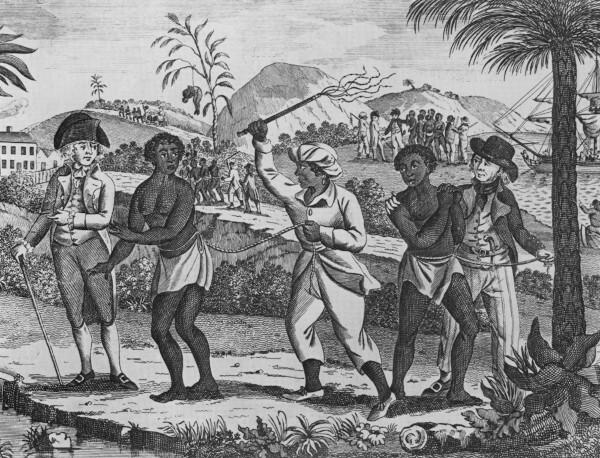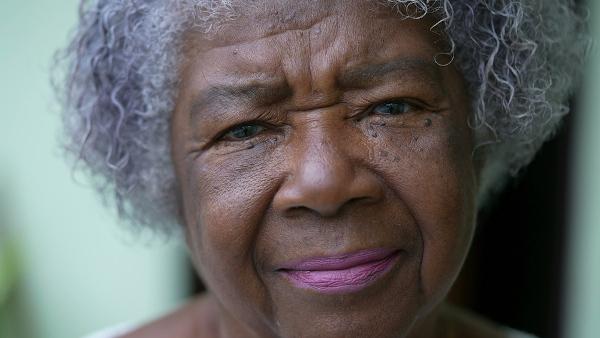O colorism is a social classification system that determines how people should be read socially based on skin tone and other characteristics. It can happen in relationships between people of all colors, depending a lot on local history. This form of discrimination is based on skin tone and other physical traits. It affects the lives of individuals because it helps to perpetuate inequalities, undermines self-esteem and prevents access to opportunities.
In Brazil, colorism is widely discussed on social networks and in political discussions about the place of light-skinned black people, or “pardas”, in the Brazilian population. Despite being similar, racism and colorism have important differences to be explained. However, like racism, colorism negatively affects black people's self-esteem, access to opportunities and mental health.
Read too: Etarism — prejudice based on a person's age
Summary about colorism
Colorism is a racial classification system that determines how people should be read socially according to skin tone and other characteristics.
Its origins date back to the early modern age, when Europeans built the world-system by conquering colonies.
The concept began to be used by black writers and activists in the 1980s and was increasingly assimilated by the Social Sciences.
If racism intends to exclude a person from a certain racial group, colorism establishes hierarchies within that same racial group based on skin pigmentation.
In Brazil, because of the myth of racial democracy, the concept of colorism still needs to be much discussed and researched.
Its consequences are enormous in perpetuating inequalities, marginalizing groups, and harming the mental lives of both light- and dark-skinned black people.
What is colorism?
The term colorism is defined as the difference in treatment between black people based solely on skin color. It can happen among people with black skin, but, like racism, it works structurally in Brazil and does not depend only on individual intentions. Unlike racism, which is guided by the subject's belonging to a race to exercise discrimination, colorism emphasizes the person's skin color.
the colorism creates a kind of pigmentocracy. According to their prejudiced logic, the darker a person's skin is, the less access they can get and the more types of racism they can suffer. Therefore, even if a person is recognized as being of African descent, the tone of their skin (and other physical characteristics) turns out to be decisive in defining her social belonging and the affective treatment she will receive from others.
Origins of Colorism
A word colorism is relatively recent. It became popular in the United States, starting in the 1980s, because of the books and activism of people like Alice Walker, Toni Morrison, bell hooks and Kwame Anthony Appiah. In 2002, sociologist Margaret Hunter gained prominence with her article entitled “Colorism and Marriage: Preferences in the United States”.
In the article, Hunter examines how notions of beauty and attractiveness associated with skin color affect the choice of romantic partners and spouses. Her research, supported by statistics and interviews, demonstrates that there is a general preference for light-skinned partners, especially among black men and white women.
O The concept of colorism, however, refers to a social phenomenon that has its roots in European colonialism.. Colonialism is an international system of economic exploitation whereby more powerful nations dominate weaker nations. The colonizer controls the colonies through a combination of military, state, market and productive domains.
Within the world-system, the role of a colony is to provide resources so that the colonizing power can manufacture in its products cheaply, which will be profitably sold on world markets, including to its own colonies. Colonialism has played an important role in accelerating the development of capitalism in Europe since the early modern period.
The empires formed since then created wealth to generate investments and markets for the consumption of increasingly abundant goods. To deepen exploration and increase profits, the colonizer established patterns of dependency and economic, political, social and cultural domination in the colonies.

Social control in the colonies was based on a hierarchy in which people of different ethnicities or races were classified based on their proximity to European standards of beauty and culture. Although former colonies are now self-governing, exploitative relationships persist within them. This is how, for example, dominant ethnic or racial groups within the same country can continue to exploit subordinate groups for a long time to come.
You European colonizers, influenced by racist ideologies, concluded that dark skin and other physical aspects were signs of degeneration. This belief has been reinforced by pseudoscientific theories, like social darwinism and phrenology, which promoted the idea of white superiority and linked blacks to criminal behavior.
Therefore, the origins of the concept of colorism are linked to the history of colonization, slavery and racial oppression. These historical structures created and perpetuated racial hierarchy, in which skin color plays a key role. a significant role in determining the treatment and opportunities that people receive in society.
Check out our podcast: Difference between prejudice, racism and discrimination
colorism and racism
O colorism should not be confused with racism, although they are related. Both are based on prejudices rooted in society. However, whereas racism discriminates against an individual based on the belief that some races are superior to others, colorism focuses on nuances of color within the same ethnic group.

Therefore, without excluding a person from a certain racial group, the colorism establishes hierarchies within that same group based on skin pigmentation. Even so, it is important to recognize that colorism and racism are intertwined and can overlap. Just like racism, colorism impacts the lives of individuals, undermining their prospects for success, access to opportunities and fair treatment. To better understand the concept of racism, click here.
Colorism in Brazil
Let's start with the fact that color, in Brazil, encompasses more than skin color: in our classification, hair texture and shape of nose and lips, in addition to cultural traits, are important elements in defining color (black, brown, yellow and white). Despite being guided by skin color, Brazilian colorism also contemplates these phenotypic aspects. In addition, cultural and religious expressions associated with the color black are constantly targets of intolerance and prejudice.
In 1976, when the Brazilian Institute of Geography and Statistics (IBGE) allowed each individual to say freely which color they identified with in the Demographic Census, among the more than 136 records, were identifications such as “donkey color when he runs away”, “half white”, “light blonde” and “brown brunette”.
Currently, the survey standardizes skin colors and ethnicities into yellow, white, indigenous, brown and black. People declared black (black and brown) in Brazil represent more than 56% of the population. Such as Brazilian population is so mixed, it is essential to discuss colorism to face structural racism.
This confrontation, in Brazilian society, encounters an obstacle because we are very fond of the miscegenation ideology and the myth of racial democracy, disseminated by the work by Gilberto Freyre. More than half of the Brazilian population is self-declared black, but the term miscegenation, linked to the aforementioned myth, led to the belief that only people with dark skin can be referred to as black.
Unlike the United States, the our social indicators on education, work and health do not reveal any kind of advantage for light-skinned black people in relation to dark-skinned black people.
According to data released by the IBGE, in 2017, while the average real income of a white worker was R$2660 and that of a black worker was R$1461, that of a brown worker was R$1480. In the same year, among the murdered youths, aged between 15 and 29 years old, most of them were brown men. The same is true in the prison system. In women's prisons, for example, in 2017, brown women represented 48.04%, black 15.51% and white 35.59%.
Among domestic workers, 50% are brown (which makes up 40% of the total number of women), 13% are black (when they are 8% of the total number of women), and 35% are white (47% of the total number of women).
During the pandemic, the number of deaths from respiratory diseases, even without a diagnosis of covid-19, grew 24.5% more among whites, 70.2% more among blacks and 72.8% more among pardos, if we compare the period between March 16, 2019 and June 30, 2020. Likewise, during the pandemic, while unemployment among whites was 9.5%, among blacks it was 14.4%, and among browns, 14.1%.
Is it a privilege to be more likely to hold menial employment, to die as a result of violence, or to occupy a crowded prison cell or hospital bed? These statistics serve to show that racial democracy is a historically dated ideology, but they do not serve to describe race relations in the country.
consequences of colorism
One of the consequences of colorism is the perpetuation of racial stereotypes and prejudices. He guides that black people with lighter skin are more attractive, intelligent and successful, while those with darker skin are stigmatized and marginalized. This leads to inequality of opportunity, affecting access to jobs, education, housing and other important resources. In this way, colorism, or pigmentocracy, creates a hierarchy of color within a racial group, generating divisions and tensions.
In the fashion and beauty market, colorism manifests itself in few product lines that offer options for dark-skinned black people. This ends up reinforcing the idea that beauty is synonymous with having clear skin. Likewise, lighter-skinned models often walk the catwalks. If the fashion world does not recognize and value the diversity of skin tones and body shapes, the feeling of inadequacy will increase among people with darker skin or outside the body pattern.

You psychological impacts caused by colorism are huge. People who are discriminated against may suffer from low self-esteem, feelings of inadequacy and shame about their appearance. The search for a Eurocentric and unattainable aesthetic standard can lead men and women to eating disorders, anxiety and depression.
Furthermore, as depicted in the book The girl who was born without color, by Midria Pereira da Silva, the internalization of negative or sexualized messages about skin color can affect the construction of identity and self-acceptance.
the colorism affects relationship dynamics and social interactions between black people who have different skin tones. The stereotypes associated with each skin tone act as a fragmenting factor in the identity of the black population, causing divisions and conflicts. Lighter-skinned black people are often prioritized in terms of social acceptance and affection, while darker-skinned people face greater rejection and exclusion.
Colorism can lead to distance between people of the same racial group and make it difficult to build a black community united in the anti-racist struggle. This division has a significant impact for black feminism. Colorism also contributes to the idealization and search for partners with lighter skin tones, reinforcing once again the idea that beauty is directly linked to the European standard, which favors the idea of a gradual whitening of population.
Representativeness in the media and entertainment industries plays a key role in combating colorism. The absence of dark-skinned protagonists in positive roles, or on the newsstand, reinforces the idea that beauty and success are intrinsically linked to lighter skin. Without the visibility of the diversity of skin tones, dark-skinned black people grow up in a vicious cycle where there are fewer and fewer positive models to identify with and be inspired by.
It is critical to recognize that colorism is not just an individual problem but also a systemic problem rooted in social structures. Therefore, confronting colorism is the same as promoting an egalitarian, fair and inclusive society. All lives have the same value and all colors matter to life.
Sources
BACELAR, Gabriela. (Against) black miscegenation: fair skin, anti-colorism and racial heteroidentification commissions. Dissertation (master's degree) - Federal University of Bahia. Faculty of Philosophy and Human Sciences, Salvador, 2021.
RIBEIRO, Djamila. Little Anti-Racist Handbook. São Paulo: Companhia das Letras, 2019.
SANTANA, Bianca. Our light-skinned blackness will not be traded. Available in: https://www.uol.com.br/ecoa/colunas/bianca-santana/2020/07/28/nossa-negritude-de-pele-clara-nao-sera-negociada.htm.
By Rafael Pereira da Silva Mendes
Professor of Sociology

